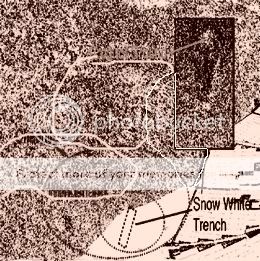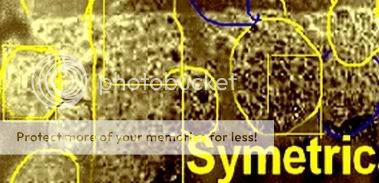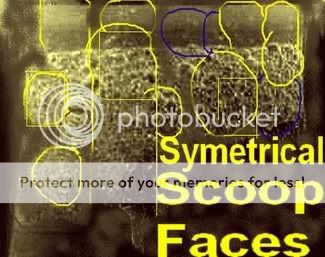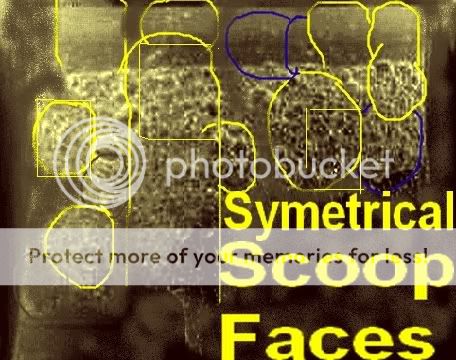It looks like you're using an Ad Blocker.
Please white-list or disable AboveTopSecret.com in your ad-blocking tool.
Thank you.
Some features of ATS will be disabled while you continue to use an ad-blocker.
share:
reply to post by ArMaP
ArMaP, thanks for taking the time to provide us with that explanation: you are the best on that stuff
Martian Soil Delivery to Analytical Instrument on Phoenix
Full article
Soil Delivery to Phoenix Oven
Image caption:
Full Resolution
Credits & source:
NASA/JPL-Caltech/University of Arizona/Texas A&M University
Martian Soil Delivery to Analytical Instrument on Phoenix
Image caption:
Credits & source:
NASA/JPL-Caltech/University of Arizona/Max Planck Institute
[edit on 8/6/2008 by internos]
ArMaP, thanks for taking the time to provide us with that explanation: you are the best on that stuff
Update
Martian Soil Delivery to Analytical Instrument on Phoenix
The Robotic Arm of NASA's Phoenix Mars Lander released a sample of Martian soil onto a screened opening of the lander's Thermal and Evolved-Gas Analyzer (TEGA) during the 12th Martian day, or sol, since landing (June 6, 2008). TEGA did not confirm that any of the sample had passed through the screen.
Full article
Soil Delivery to Phoenix Oven
Image caption:
This image shows a view from NASA's Phoenix Mars Lander's Stereo Surface Imager's left eye after delivery of soil to the Thermal and Evolved-Gas Analyzer (TEGA), taken on the 12th Martian day after landing (Sol 12, June 6, 2008).
Soil is visible on both sides of the open doors of TEGA's #4 oven. Sensors inside the device indicate no soil passed through the screen and into the oven.
Full Resolution
Credits & source:
NASA/JPL-Caltech/University of Arizona/Texas A&M University
* * * * * * * * * * * * * * *
Martian Soil Delivery to Analytical Instrument on Phoenix
Image caption:
The Robotic Arm of NASA's Phoenix Mars Lander released a sample of Martian soil onto a screened opening of the lander's Thermal and Evolved-Gas Analyzer (TEGA) during the 12th Martian day, or sol, since landing (June 6, 2008). TEGA did not confirm that any of the sample had passed through the screen.
The Robotic Arm Camera took this image on Sol 12. Soil from the sample delivery is visible on the sloped surface of TEGA, which has a series of parallel doors. The two doors for the targeted cell of TEGA are the one positioned vertically, at far right, and the one partially open just to the left of that one. The soil between those two doors is resting on a screen designed to let fine particles through while keeping bigger ones from clogging the interior of the instrument. Each door is about 10 centimeters (4 inches) long.
Credits & source:
NASA/JPL-Caltech/University of Arizona/Max Planck Institute
[edit on 8/6/2008 by internos]
I knew from the beginning that this scoop system was insane. It looks like some crap an idiot like me would design.. yeah we scoop it up and ok drop
it on the hatch! what? it's clumping? oh crap! 400 million down the drain argghhh!!! fired again!!
think core samples nasa /headinhands
think core samples nasa /headinhands
reply to post by internos
Oh boy. This is the winner of the 500 million dollar waste of time and energy. Scooping up dirt to be tested. That's got to have its drawbacks. Failed communications. Failed testing equipment. I'm telling you we got to be the most stupidest life in the universe if were going to go along with this. It's like some puppet show and were these kids that are so thrilled and marveled that they can move and talk like nothing else we've never seen before. Sorry but NASA should be shutdown and kept from dragging our economy further down the hole.
How about spending all this money on electric car production? This money can be used to build upon a stronger infrastructure not some rock hounds dream of finding crystal meth on the surface of a martian surface.
What's next? Flyby rock photography?
Oh boy. This is the winner of the 500 million dollar waste of time and energy. Scooping up dirt to be tested. That's got to have its drawbacks. Failed communications. Failed testing equipment. I'm telling you we got to be the most stupidest life in the universe if were going to go along with this. It's like some puppet show and were these kids that are so thrilled and marveled that they can move and talk like nothing else we've never seen before. Sorry but NASA should be shutdown and kept from dragging our economy further down the hole.
How about spending all this money on electric car production? This money can be used to build upon a stronger infrastructure not some rock hounds dream of finding crystal meth on the surface of a martian surface.
What's next? Flyby rock photography?
reply to post by WISHADOW
Despite the fact that I'm really interested in Mars, I can't argue with this. Nicely put!!
At least this would be a reasonable appropriation of monies in the immediate sense, yeah?
Despite the fact that I'm really interested in Mars, I can't argue with this. Nicely put!!
At least this would be a reasonable appropriation of monies in the immediate sense, yeah?
Why is it that ATS is a better news source than NASA itself??
Great work Internos!
I suspect there are other devices on the Phoenix we don't know of. Maybe additional scanning for soil in hidden components.
Why it was too hard to put a tiny incubator with bacteria growth medium or similar on this thing is beyond me. This is more like a geologists probe rather than a biologists. Too many baby steps when we are being chased by a tiger. Life is ubiquitous and likely on Mars, if not underground and intelligent will be in the rock, sands and ice as microbial, bacteriological or even viral, or like the red rain that fell over India that reproduces without DNA.
Someone (the People) need to kick he current budget hogs out of Washington so we can get proper funding to do good broadband science. New agency might need be made. ISA, International Space Agency? Screw the proprietary and nationalistic crap. As a species, we need to know, and I won't complain about the tax if I know it is doing it's work here.
Thanks again Internos. I'll hire you as a web journalist just as soon as I can afford myself.
GMM
Great work Internos!
I suspect there are other devices on the Phoenix we don't know of. Maybe additional scanning for soil in hidden components.
Why it was too hard to put a tiny incubator with bacteria growth medium or similar on this thing is beyond me. This is more like a geologists probe rather than a biologists. Too many baby steps when we are being chased by a tiger. Life is ubiquitous and likely on Mars, if not underground and intelligent will be in the rock, sands and ice as microbial, bacteriological or even viral, or like the red rain that fell over India that reproduces without DNA.
Someone (the People) need to kick he current budget hogs out of Washington so we can get proper funding to do good broadband science. New agency might need be made. ISA, International Space Agency? Screw the proprietary and nationalistic crap. As a species, we need to know, and I won't complain about the tax if I know it is doing it's work here.
Thanks again Internos. I'll hire you as a web journalist just as soon as I can afford myself.
GMM
reply to post by ZeroGhost
Um, not that I'm complaining, but most of Internos' data/images came from NASA/JPL.
And yeah, that's the issue: 40 some years and billions of taxpayer dollars later, naysayers DO still have a leg to stand on when it comes to denying Mars biology. That leg being the official stance of our prestigious space agencies.
This is beyond ridicuous. The Viking demonstrated metabolic activity in Martian soils that had the experiment been conducted on earth, the data would have been acceptable/strong or even conclusive as to the presence of Martian metabolism. That's one of the loopholes here. Any results from analysis of all-things-Mars can be questioned/refuted soley based on the fact that they were conducted on Mars. I hear this ambiguous Martian-mystery, Unknown condition, Alien physics, alien chemistry argument leveled agains all data from Mars that is indicative of anything remotely biological. It's all just weird misunderstood Martian geochemistry, right?
Um, not that I'm complaining, but most of Internos' data/images came from NASA/JPL.
And yeah, that's the issue: 40 some years and billions of taxpayer dollars later, naysayers DO still have a leg to stand on when it comes to denying Mars biology. That leg being the official stance of our prestigious space agencies.
This is beyond ridicuous. The Viking demonstrated metabolic activity in Martian soils that had the experiment been conducted on earth, the data would have been acceptable/strong or even conclusive as to the presence of Martian metabolism. That's one of the loopholes here. Any results from analysis of all-things-Mars can be questioned/refuted soley based on the fact that they were conducted on Mars. I hear this ambiguous Martian-mystery, Unknown condition, Alien physics, alien chemistry argument leveled agains all data from Mars that is indicative of anything remotely biological. It's all just weird misunderstood Martian geochemistry, right?
The sample has finally entered the oven, but apparently it did it all by itself.
Source
I hope that the soil has not changed that much, the time it spent on top of the oven door may have altered it too much.
"We have an oven full," Phoenix co-investigator Bill Boynton of the University of Arizona, Tucson, said today. "It took 10 seconds to fill the oven. The ground moved."
Boynton said that the oven might have filled because of the cumulative effects of all the vibrating, or because of changes in the soil's cohesiveness as it sat for days on the top of the screen.
"There's something very unusual about this soil, from a place on Mars we've never been before," said Phoenix Principal Investigator Peter Smith of the University of Arizona. "We're interested in learning what sort of chemical and mineral activity has caused the particles to clump and stick together."
Source
I hope that the soil has not changed that much, the time it spent on top of the oven door may have altered it too much.
reply to post by WISHADOW
You are right, i'd love to see electric cars, your post is both balanced and interesting.
That said: what if Christopher Columbus would have decided to play chess rather than explore the World?
Are you sure that U.S.A. and YOU would exist today?
And since you would like to cut money from space exploration, what about to BOMB less coutries all around the world?
Iraq war is costing $100,000 per minute
Exploration is mostly made of FAILURES.
If we don't explore, then we deliberately choose do stay hidden in this small planet: i perfectly understand your point, but did you try to understand scientist's ones?
[edit on 11/6/2008 by internos]
You are right, i'd love to see electric cars, your post is both balanced and interesting.
That said: what if Christopher Columbus would have decided to play chess rather than explore the World?
Are you sure that U.S.A. and YOU would exist today?
And since you would like to cut money from space exploration, what about to BOMB less coutries all around the world?
Iraq war is costing $100,000 per minute
Exploration is mostly made of FAILURES.
If we don't explore, then we deliberately choose do stay hidden in this small planet: i perfectly understand your point, but did you try to understand scientist's ones?
[edit on 11/6/2008 by internos]
And Christopher Columbus is a good example, finding America was a faillure, he was looking for Asia.
Originally posted by internos
Exploration is mostly made of FAILURES.
Originally posted by ArMaP
And Christopher Columbus is a good example, finding America was a faillure, he was looking for Asia.
Originally posted by internos
Exploration is mostly made of FAILURES.
That's exactly what i meant, ArMaP:
to explore means to open new gates anyway, not necessarly the ones that one wishes to open: the more we get far, the more we have chances to learn. Many discoveries happened by accident, one of them is America as we know it today: what we know for sure is that without that travel, america wouldn't be what today IS, regardless what Columbus purposes were: he was looking for a new way to travel to the Indies, and he came across America. And that has happened thank to exploration.
The only reason I sympathize with the "cut-NASA-funding" attitude held by some is becasue it's become appearent to me that "yes," discoveries and
progress are being made, but "no," they won't let us, taxpayers, reap any of the benefits. Not even satisfaction of curiosity.
Phoenix, Jun. 13/08 release:
phoenix.lpl.arizona.edu...
Phoenix, Jun. 13/08 release:
phoenix.lpl.arizona.edu...
Originally posted by ArMaP
I hope that the soil has not changed that much, the time it spent on top of the oven door may have altered it too much.
Yeah.. "Now that the water has evaporated from the sample, let's test it for water"!
LOL!
reply to post by InfaRedMan
Yes! And might I also add .... AAAAAAAAAAAAAAAAHHHH!!!
What are they doinG!?
www.msnbc.msn.com...
Yes! And might I also add .... AAAAAAAAAAAAAAAAHHHH!!!
What are they doinG!?
www.msnbc.msn.com...
Lol: well, i post the update from Phoenix website:
NASA Phoenix Mars Lander Confirms Frozen Water
Full article:
phoenix.lpl.arizona.edu...
Disappearing Ice
phoenix.lpl.arizona.edu...
[edit on 20/6/2008 by internos]
NASA Phoenix Mars Lander Confirms Frozen Water
June 20, 2008 -- Scientists relishing confirmation of water ice near
the surface beside NASA's Phoenix Mars Lander anticipate even bigger
discoveries from the robotic mission in the weeks ahead.
said Phoenix Principal
It is with great pride and a lot of joy that I announce today
that we have found proof that this hard bright material is really water
ice and not some other substance,
Investigator Peter Smith of the University of Arizona, Tucson, during a
Friday news briefing to announce the confirmation of water ice.
said Smith
The truth we're looking for is not just looking at ice. It is in
finding out the minerals, chemicals and hopefully the organic materials
associated with these discoveries,
The mission has the right instruments for analyzing soil and ice to
determine whether the local environment just below the surface of
far-northern Mars has ever been favorable for microbial life. Key
factors are whether the water ever becomes available as a liquid and
whether organic compounds are present that could provide chemical
building blocks and energy for life. Phoenix landed on May 25 for a
Mars surface mission planned to last for three months.
said Doug McCuistion at NASA Headquarters,
These latest developments are a major accomplishment and
validation of the Mars Program's 'follow-the-water' exploration
framework,
Washington, director of the space agency's Mars Program.
This specific discovery is the result of an outstanding team working with a robust spacecraft that has allowed them to work ahead of their original
science schedule.
Full article:
phoenix.lpl.arizona.edu...
Disappearing Ice
These images were acquired by NASA's Phoenix Mars Lander's Surface
Stereo Imager on the 21st and 25th days of the mission, or Sols 20 and
24 (June 15 and 19, 2008).
These images show sublimation of ice in the trench informally called
Dodo-Goldilocks over the course of four days.
In the lower left corner, lumps disappear, similar to the process of
evaporation.
phoenix.lpl.arizona.edu...
[edit on 20/6/2008 by internos]
reply to post by internos
Sorry about that.
Now, I'm probably being overly optimistic, but the tone of this bit from NBC intrigues me. The fact that it's from NBC is good and also some of the reported remarks I could almost hear myself saying to someonenif I weren't completely insane...
www.msnbc.msn.com...
Sorry about that.
Now, I'm probably being overly optimistic, but the tone of this bit from NBC intrigues me. The fact that it's from NBC is good and also some of the reported remarks I could almost hear myself saying to someonenif I weren't completely insane...
www.msnbc.msn.com...
reply to post by internos
To me it looks like ice sublimed away or melted,then some salts remained,uneffected mostly by uncovering more solid crystals,sand-like salt finely chunked.That's only my opinion. I look for signs of large life on Mars. I see a variety of faces gathered at the same time these experiments are underway.Since they move,they blur and overlap.


To me it looks like ice sublimed away or melted,then some salts remained,uneffected mostly by uncovering more solid crystals,sand-like salt finely chunked.That's only my opinion. I look for signs of large life on Mars. I see a variety of faces gathered at the same time these experiments are underway.Since they move,they blur and overlap.



To a Mars mini-dragon(pinky finger sized) Phoenix lander scoop is an amusement park ride.








Do you believe that Mini-Martians could fit inside a Phoenix Scoop? Challenge your pre-conceptions.



 I believe these to be alive and staring back at the
camera for the most part. fawkes4.lpl.arizona.edu...
I believe these to be alive and staring back at the
camera for the most part. fawkes4.lpl.arizona.edu...




reply to post by vze2xjjk
vze, not only do I believe and can see there are mini sized forms of life on Mars, but when it comes to what I call Microtechs, that are like micro cyborgs, that can replicate themselves or other electronic entities similar to a tiny micro electronic part. In other words a created artificial robotic type intelligence on a micro scale that can duplicate and can create other Microtechs. This is where I believe our tiny micro printed circuit boards on Earth were born from information obtained not only from crashed UFOs but from Martian technologies.
I know we humans are already on Mars and when this Landing sight was chosen for the Phoenix Lander mission it looked to be near an underground existing base that I had located and talked about on another thread. Rik Riley
vze, not only do I believe and can see there are mini sized forms of life on Mars, but when it comes to what I call Microtechs, that are like micro cyborgs, that can replicate themselves or other electronic entities similar to a tiny micro electronic part. In other words a created artificial robotic type intelligence on a micro scale that can duplicate and can create other Microtechs. This is where I believe our tiny micro printed circuit boards on Earth were born from information obtained not only from crashed UFOs but from Martian technologies.
I know we humans are already on Mars and when this Landing sight was chosen for the Phoenix Lander mission it looked to be near an underground existing base that I had located and talked about on another thread. Rik Riley
new topics
-
Bizarre Labour Party Tic Toc Video Becomes Even More Embarrassing
Regional Politics: 1 hours ago -
Potter to WHU
World Sports: 7 hours ago -
Dr. Demento
Music: 9 hours ago -
The elephant in the room (wearing a hoodie)
US Political Madness: 9 hours ago
top topics
-
The elephant in the room (wearing a hoodie)
US Political Madness: 9 hours ago, 14 flags -
To become president, Zelensky had to learn Ukrainian
Political Conspiracies: 15 hours ago, 9 flags -
Dr. Demento
Music: 9 hours ago, 6 flags -
Bizarre Labour Party Tic Toc Video Becomes Even More Embarrassing
Regional Politics: 1 hours ago, 3 flags -
Potter to WHU
World Sports: 7 hours ago, 2 flags
active topics
-
Los Angeles brush fires latest: 2 blazes threaten structures, prompt evacuations
Mainstream News • 230 • : WeMustCare -
What Comes After January 20th
Mainstream News • 38 • : JadedGhost -
Post A Funny (T&C Friendly) Pic Part IV: The LOL awakens!
General Chit Chat • 8008 • : KrustyKrab -
Bizarre Labour Party Tic Toc Video Becomes Even More Embarrassing
Regional Politics • 7 • : Athetos -
To become president, Zelensky had to learn Ukrainian
Political Conspiracies • 31 • : FlyersFan -
S.C. Jack Smith's Final Report Says Trump Leads a Major Conspiratorial Criminal Organization!.
Political Conspiracies • 45 • : WeMustCare -
President Carter has passed
Mainstream News • 54 • : WeMustCare -
The Truth about Migrant Crime in Britain.
Social Issues and Civil Unrest • 43 • : angelchemuel -
The Fight for Election Integrity Continues -- Audits, Criminal Investigations, Legislative Reform
2024 Elections • 4374 • : IndieA -
Potter to WHU
World Sports • 3 • : gortex



